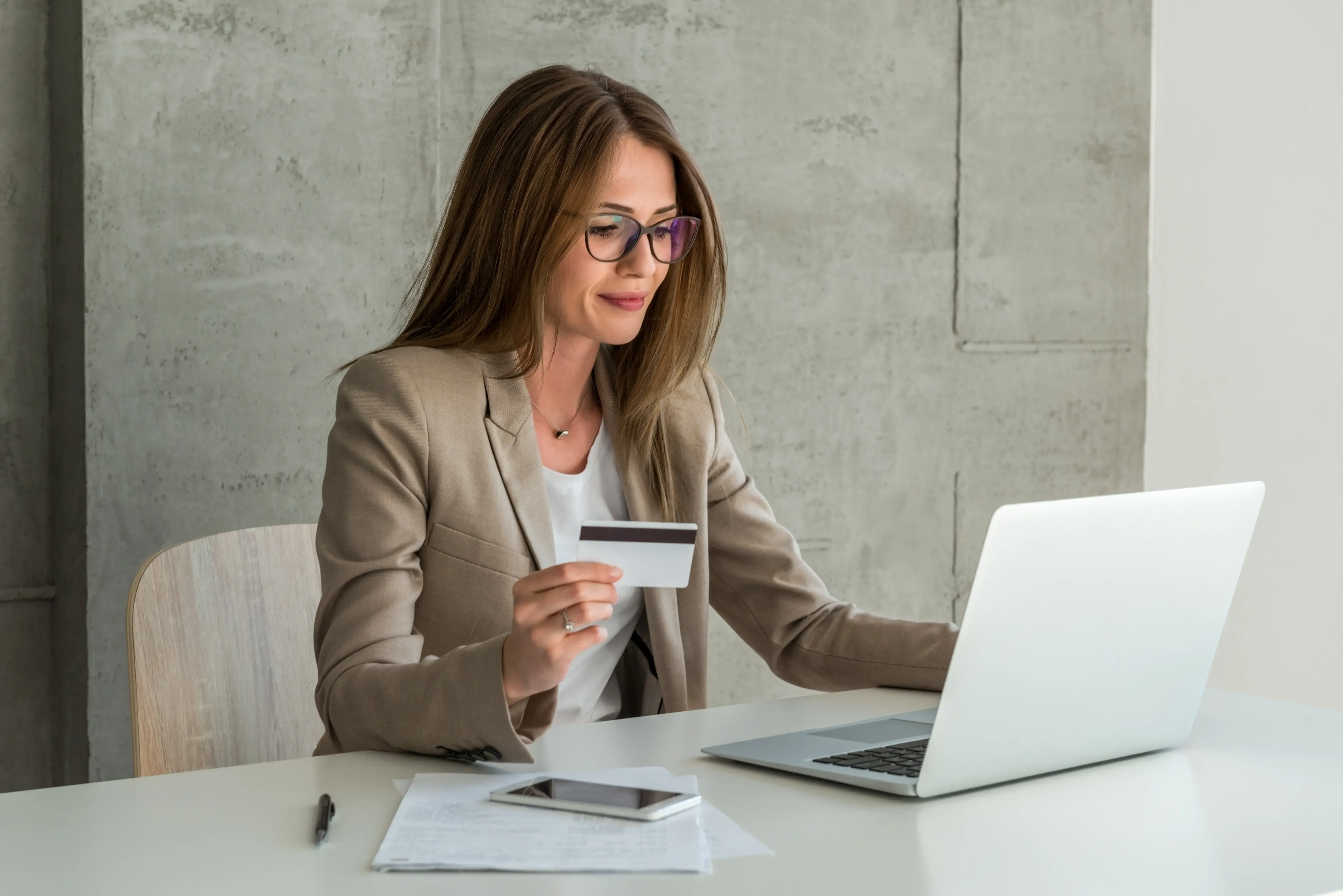-
Posted on: 21 Dec 2022

-
Claiming the Recovery Rebate Credit (RRC) on your 2025 tax return can provide a significant financial boost. This guide offers a clear, step-by-step approach to ensure you receive this crucial tax benefit, even if you missed previous stimulus payments. We'll cover eligibility, calculation, and common pitfalls to avoid.
Understanding the Recovery Rebate Credit (RRC)
The Recovery Rebate Credit (RRC) is a vital component of the U.S. tax system, designed to provide financial relief to eligible individuals and families. It essentially acts as a reconciliation mechanism for stimulus payments that were issued during specific periods. For the 2025 tax year, the RRC allows taxpayers to claim any portion of the stimulus payments they were entitled to but did not receive, or if their initial payment was less than the full amount they qualified for. This credit is particularly important for individuals who may have become eligible for a stimulus payment after the initial distribution periods, or whose circumstances changed in a way that increased their entitlement.
The RRC is a refundable tax credit. This means that if the credit amount exceeds the total tax liability you owe, you will receive the difference back as a refund. This is a critical distinction from non-refundable credits, which can only reduce your tax liability to zero. The RRC's refundable nature ensures that even low-income individuals or those with no tax liability can benefit from the stimulus relief.
It's important to understand that the RRC is not a new, separate stimulus payment. Instead, it's a way to claim what you were owed from previous stimulus legislation, primarily the CARES Act, the Consolidated Appropriations Act, 2021, and the American Rescue Plan Act of 2021. While the direct stimulus payments have concluded, the ability to claim the credit on your tax return remains. This means that even if you filed your taxes for the relevant years without claiming the credit, you might still be able to amend your return or claim it on your 2025 return if you meet the criteria.
The RRC is calculated based on your Adjusted Gross Income (AGI) and your filing status. It also takes into account the number of qualifying dependents you have. The IRS has provided specific guidelines and worksheets to help taxpayers determine their eligibility and the correct amount to claim. Understanding these nuances is key to successfully claiming the credit on your 2025 tax return.
Eligibility Criteria for the RRC
To claim the Recovery Rebate Credit (RRC) on your 2025 tax return, you must meet specific eligibility requirements. These criteria are largely based on your income, residency status, and Social Security number. It's crucial to review these requirements carefully to ensure you are eligible before attempting to claim the credit.
Residency and Citizenship Status
Generally, to be eligible for the RRC, you must be a U.S. citizen, a U.S. national, or a resident alien. Nonresident aliens are typically not eligible, with a few exceptions. For instance, if you are married to a U.S. citizen or resident alien and elect to be treated as a resident alien for tax purposes, you may be eligible. You also must have a valid Social Security number (SSN). This requirement applies to you, your spouse (if filing jointly), and any qualifying dependents you claim on your tax return. An Individual Taxpayer Identification Number (ITIN) is not sufficient for claiming the RRC.
Income Limitations
The amount of the RRC you can claim is subject to income limitations. These limitations are based on your Adjusted Gross Income (AGI) for the tax year for which you are claiming the credit (in this case, your 2025 tax return, which will use your 2025 AGI). The credit begins to phase out for taxpayers with AGI above certain thresholds. These thresholds vary based on your filing status.
For the 2025 tax year, the phase-out thresholds are generally as follows:
- Married Filing Jointly: The credit begins to phase out for taxpayers with AGI above $150,000.
- Head of Household: The credit begins to phase out for taxpayers with AGI above $112,500.
- Single, Married Filing Separately, or Qualifying Surviving Spouse: The credit begins to phase out for taxpayers with AGI above $75,000.
If your AGI is above these limits, your credit amount will be reduced. For example, for single filers, the credit reduces by $5 for every $100 of AGI above $75,000. If your AGI reaches the upper limits of the phase-out range, you may not be eligible for any credit.
Dependents
The RRC also considers qualifying dependents. A qualifying dependent is generally an individual who meets certain criteria, including having a valid SSN, being a U.S. citizen, national, or resident alien, and not filing a joint return unless it's solely to claim a refund. For the RRC, the rules for qualifying dependents were specific to the stimulus legislation. For the most recent stimulus rounds, qualifying dependents were generally children under age 17 who met the criteria. However, the American Rescue Plan Act expanded eligibility for dependents to include older children and individuals up to age 17, and in some cases, even older individuals who were full-time students. For the 2025 tax year, you will be claiming the credit based on your 2025 tax return, and the rules for dependents on that return will apply.
Requirement to Have Received a Prior Stimulus Payment
The RRC is designed to reconcile any stimulus payments you were entitled to but did not receive. Therefore, a key eligibility factor is whether you received the full amount of the stimulus payments you were due. If you received all the stimulus payments you were eligible for, you would not be eligible to claim the RRC. The credit is for the difference between what you were entitled to and what you actually received. This includes situations where you received a payment that was less than the full amount due to a change in your income, filing status, or the addition of a qualifying dependent during the relevant tax years.
No Other Taxpayer Claiming You as a Dependent
If you can be claimed as a dependent on someone else's tax return, you are generally not eligible to claim the RRC yourself. This is because the stimulus payments and the associated credit are intended for individuals who are not claimed as dependents. However, if you are a dependent and your parent or guardian claims you as a dependent, they may be able to claim the credit for you on their return, provided they meet all other eligibility requirements.
Specific Stimulus Periods and Their Impact
The RRC is tied to the stimulus payments authorized by different pieces of legislation. Understanding which payments the RRC relates to is crucial for accurate calculation and claiming.
First and Second Economic Impact Payments (EIPs)
The first two Economic Impact Payments were authorized by the CARES Act (March 2020) and the Consolidated Appropriations Act, 2021 (December 2020). These payments were generally $1,200 per eligible adult and $500 per qualifying child for the first EIP, and $600 per eligible adult and $600 per qualifying child for the second EIP. If you did not receive the full amount of these payments, you could claim the unpaid portion as the Recovery Rebate Credit on your 2020 tax return (filed in 2021). For the 2025 tax year, the RRC will primarily focus on the third EIP.
Third Economic Impact Payment (EIP 3)
The third Economic Impact Payment was authorized by the American Rescue Plan Act of 2021 (March 2021). This payment was generally $1,400 per eligible individual and $1,400 per qualifying dependent. The eligibility and amount for this payment were based on your 2019 or 2020 tax return, whichever resulted in a higher payment. If you did not receive the full amount of the third EIP, you can claim the unpaid portion as the Recovery Rebate Credit on your 2021 tax return (filed in 2022). However, for the 2025 tax year, the RRC is still relevant for individuals who may have missed claiming this credit on their 2021 return or whose eligibility changed.
It's important to note that the RRC on your 2025 tax return is primarily for any portion of the third EIP that you did not receive. If you failed to claim the RRC for the first and second EIPs on your 2020 return, you would have needed to amend that return. The 2025 tax return's RRC specifically addresses the third EIP.
Calculating Your RRC Amount
Calculating your Recovery Rebate Credit (RRC) amount accurately is essential for claiming the correct benefit on your 2025 tax return. The calculation involves understanding the maximum credit amounts and applying the relevant income phase-outs and dependent rules.
Maximum Credit Amounts
The maximum RRC amount is based on the third Economic Impact Payment (EIP 3) authorized by the American Rescue Plan Act. For the 2025 tax year, you are claiming the portion of this payment that you did not receive. The maximum amounts are:
- $1,400 for individuals.
- $1,400 for each qualifying dependent.
Therefore, a single individual with no dependents could be eligible for up to $1,400. A married couple filing jointly with two qualifying children could be eligible for up to $5,600 ($1,400 x 4).
Using Your Prior Year Tax Return Information
The IRS uses information from your prior tax returns to determine your eligibility and the amount of the stimulus payments you should have received. For the RRC on your 2025 tax return, the calculation is primarily based on the third EIP. The eligibility and amount for the third EIP were determined using your 2019 or 2020 tax return, whichever provided the most favorable outcome for you. If you have not yet claimed the RRC for the third EIP on your 2021 tax return, you will use the information from those prior returns to calculate the credit for your 2025 return.
You will need to know your AGI from your 2020 tax return (for the third EIP's initial determination) and potentially your 2021 tax return if your circumstances changed significantly and affected your eligibility for the credit on that return. The RRC is claimed on Form 1040, Schedule 3 (Form 1040), Additional Credits and Payments.
Applying Income Phase-Outs
As mentioned earlier, the RRC amount is reduced if your AGI exceeds certain thresholds. The calculation of the reduction is crucial.
For the third EIP, the credit amount is reduced by 5% of the amount your AGI exceeds the threshold. The thresholds for the third EIP, which are relevant for the RRC on your 2025 return if you haven't claimed it yet, are:
- Married Filing Jointly: Phase-out begins at $150,000 AGI.
- Head of Household: Phase-out begins at $112,500 AGI.
- Single, Married Filing Separately, or Qualifying Surviving Spouse: Phase-out begins at $75,000 AGI.
Example: Let's say you are filing as Single and your 2020 AGI was $85,000. The phase-out for single filers begins at $75,000. The excess amount is $85,000 - $75,000 = $10,000. The reduction in your credit is 5% of $10,000, which is $500. If you were otherwise eligible for the full $1,400 credit, your RRC would be reduced by $500, resulting in a credit of $900.
If your AGI is at or above the upper limits of the phase-out range, you will not be eligible for any RRC:
- Married Filing Jointly: $190,000
- Head of Household: $142,500
- Single, Married Filing Separately, or Qualifying Surviving Spouse: $99,000
Impact of Dependents
Qualifying dependents significantly increase the potential RRC amount. Each qualifying dependent can add up to $1,400 to your total credit. For the third EIP, a qualifying dependent was an individual who met the criteria, including having a valid SSN, being a U.S. citizen, national, or resident alien, and being claimed as a dependent on your tax return. For the third EIP, the age limit for qualifying children was expanded to include individuals up to age 17.
Example: A married couple filing jointly with an AGI of $130,000 and two qualifying children would be eligible for a maximum RRC of $2,800 ($1,400 for each child), as their AGI is below the $150,000 phase-out threshold. If they had only one child, the maximum would be $1,400.
Using the IRS Recovery Rebate Credit Worksheet
The IRS provides a specific worksheet within the instructions for Form 1040 and Schedule 3 to help you calculate your RRC. This worksheet guides you through the steps, including determining your maximum credit, applying the income phase-out, and accounting for any stimulus payments you may have already received. It's highly recommended to use this worksheet to ensure accuracy.
The worksheet typically involves these steps:
- Determine your maximum potential credit based on your filing status and the number of qualifying dependents.
- Determine your AGI from your 2020 tax return.
- Calculate the reduction amount based on your AGI and the applicable phase-out thresholds.
- Subtract the reduction amount from your maximum potential credit to arrive at your RRC.
- Subtract any stimulus payments you already received from the calculated RRC. The remaining amount is what you can claim on your tax return.
If you are claiming the RRC on your 2025 tax return for the third EIP, and you did not receive it on your 2021 tax return, you will essentially be performing these calculations again, referencing your 2020 AGI and the rules for the third EIP.
Important Distinction from Previous Credits
It's crucial to remember that the RRC on your 2025 tax return is specifically for the third EIP. If you missed claiming the RRC for the first and second EIPs on your 2020 tax return, you would have needed to amend that return. The 2025 tax return's RRC is for any unpaid portion of the third EIP that you were eligible for but did not receive. This ensures that all eligible taxpayers can receive the full benefit of the stimulus legislation.
How to Claim the RRC on Your 2025 Tax Return
Claiming the Recovery Rebate Credit (RRC) on your 2025 tax return involves accurately filling out specific forms and schedules. The process is designed to be straightforward, but attention to detail is key. This section will guide you through the steps to ensure you correctly claim this valuable credit.
Step 1: Gather Necessary Information
Before you begin filling out your tax forms, ensure you have all the required information readily available. This includes:
- Your Social Security Number (SSN): You, your spouse (if filing jointly), and any dependents you claim must have a valid SSN.
- Your Adjusted Gross Income (AGI): You'll need your AGI from your 2020 tax return. This is crucial for determining eligibility and calculating the credit amount due to the income phase-outs.
- Information about Stimulus Payments Received: You should have received notices (Notice 1444-B for the third EIP) from the IRS detailing the amount of stimulus payments you received. If you don't have these notices, you can check your bank statements for direct deposit records.
- Information about Dependents: Names, SSNs, and relationship to you for any qualifying dependents you are claiming the credit for.
- Your 2025 Tax Return Forms: You'll be using Form 1040 (U.S. Individual Income Tax Return).
Step 2: Determine Your Eligibility and Credit Amount
As detailed in the previous section, you need to confirm your eligibility based on residency, citizenship, SSN, and income limitations. Use the IRS Recovery Rebate Credit Worksheet, found in the instructions for Form 1040 and Schedule 3, to calculate the exact amount of the RRC you are entitled to claim. This worksheet will help you:
- Calculate the maximum potential credit based on your filing status and dependents.
- Apply the income phase-out based on your 2020 AGI.
- Subtract any stimulus payments you have already received.
The result of this calculation is the amount of the RRC you can claim on your 2025 tax return.
Step 3: Complete Form 1040 and Schedule 3
The RRC is claimed on your main tax return, Form 1040. However, the calculation and specific details are entered on Schedule 3 (Form 1040), Additional Credits and Payments.
On Form 1040:
- Locate the line for "Recovery Rebate Credit." This line number may vary slightly by tax year, but it's typically found in the "Credits and Payments" section.
- Enter the total RRC amount you calculated using the worksheet.
On Schedule 3 (Form 1040):
- You will need to fill out the section related to the Recovery Rebate Credit. This usually involves entering the calculated credit amount.
- The schedule will likely ask for details such as the amount of stimulus payments you received and your 2020 AGI, to verify the credit.
- Ensure that the total RRC amount you enter on Schedule 3 matches the amount you enter on Form 1040.
Example: If your RRC calculation using the worksheet shows you are eligible for a $1,400 credit, and you have already received $1,000 in stimulus payments, you would claim $400 as your RRC on your 2025 tax return. You would enter "$400" on the designated line on Form 1040 and also report this on Schedule 3.
Step 4: Review and File Your Tax Return
Before submitting your tax return, carefully review all the information you have entered, especially the RRC calculation and the figures on Form 1040 and Schedule 3. Ensure that all SSNs are correct and that the AGI used for the calculation is accurate from your 2020 tax return.
If you are using tax preparation software, it will guide you through the process and perform the calculations automatically based on the information you input. Ensure you are using up-to-date software that is compliant with the latest tax laws for the 2025 tax year.
Once you are confident that all information is accurate, file your tax return electronically (e-file) for the fastest processing and refund. You can also mail your return if you prefer.
What If You Already Filed Your 2021 Tax Return?
If you filed your 2021 tax return and claimed the RRC for the third EIP, you do not need to do anything further for that credit on your 2025 tax return, unless there was an error in your original claim. The RRC is a one-time claim for the unpaid portion of the stimulus payments. If you missed claiming it on your 2021 return, you would generally need to amend your 2021 return using Form 1040-X, Amended U.S. Individual Income Tax Return. However, for the purpose of the 2025 tax year, the focus is on ensuring that any outstanding RRC for the third EIP is claimed. If you discover you missed it on your 2021 return, you should amend that return. The IRS has specific procedures for amending past returns.
Common Mistakes and How to Avoid Them
When claiming the Recovery Rebate Credit (RRC), taxpayers can sometimes make errors that delay their refund or lead to incorrect amounts. Being aware of these common pitfalls can help you avoid them and ensure a smooth tax filing process for your 2025 return.
Mistake 1: Using the Wrong AGI
Description: The RRC calculation, particularly for the third EIP, relies on your Adjusted Gross Income (AGI) from your 2020 tax return. A frequent mistake is using the AGI from the current tax year (2025) or a different prior year.
How to Avoid: Always refer to your 2020 Form 1040 to find your exact AGI. Double-check the line number on your 2020 return to ensure you are using the correct figure. If you used tax software for your 2020 return, it should store this information.
Mistake 2: Incorrectly Calculating the Credit Amount
Description: Taxpayers may miscalculate the credit amount due to errors in applying the income phase-out rules or incorrectly counting dependents.
How to Avoid: Diligently use the IRS Recovery Rebate Credit Worksheet found in the instructions for Form 1040 and Schedule 3. This worksheet is specifically designed to guide you through the calculation step-by-step. If you are unsure about dependent eligibility, review the IRS criteria for qualifying dependents.
Mistake 3: Not Accounting for Stimulus Payments Already Received
Description: The RRC is for the portion of stimulus payments you were entitled to but did not receive. Claiming the full maximum credit without subtracting payments already received is a common error.
How to Avoid: Carefully review any IRS notices (like Notice 1444-B) or bank statements showing direct deposits of stimulus payments. Subtract the total amount of stimulus payments you received from the maximum credit you are eligible for. The remainder is your RRC.
Mistake 4: Missing or Incorrect Social Security Numbers (SSNs)
Description: The RRC requires that you, your spouse (if filing jointly), and any qualifying dependents have a valid SSN. If any of these individuals do not have an SSN, you are not eligible for the credit.
How to Avoid: Before claiming the RRC, verify that everyone listed on your return who contributes to the credit calculation has a valid SSN. Ensure these SSNs are entered correctly on your tax return. An ITIN is not sufficient for RRC eligibility.
Mistake 5: Claiming the Credit if You Were a Dependent
Description: Individuals who can be claimed as a dependent on someone else's tax return are generally not eligible to claim the RRC themselves.
How to Avoid: If you were claimed as a dependent on another taxpayer's return for the relevant tax year (which would typically be your 2020 or 2021 tax year for the third EIP), you cannot claim the RRC. The person claiming you as a dependent might be eligible to claim the credit for you, depending on the specific stimulus rules.
Mistake 6: Errors in Filing Status
Description: The income phase-out thresholds for the RRC differ based on filing status (Single, Married Filing Jointly, Head of Household, etc.). Using the incorrect filing status can lead to an incorrect credit calculation.
How to Avoid: Ensure you are using the correct filing status that accurately reflects your circumstances for the tax year in question. If you are unsure, consult IRS resources or a tax professional.
Mistake 7: Attempting to Claim the RRC for the Wrong Stimulus Payment on the Wrong Return
Description: The RRC is tied to specific stimulus payments and must be claimed on the correct tax return. For instance, the RRC for the first two EIPs was claimed on the 2020 return, while the RRC for the third EIP was claimed on the 2021 return. For the 2025 tax year, the focus is on claiming any unpaid portion of the third EIP if it was missed on the 2021 return.
How to Avoid: Understand which stimulus payment the RRC on your 2025 tax return pertains to (primarily the third EIP). If you missed claiming the RRC for the third EIP on your 2021 return, you need to amend that return using Form 1040-X. Do not attempt to claim prior year RRCs on your current year's return unless specifically instructed by the IRS or applicable tax law.
Mistake 8: Not Keeping Records
Description: Failing to keep records of stimulus payments received, IRS notices, and your tax returns can make it difficult to accurately calculate and claim the RRC.
How to Avoid: Maintain a secure file for all tax-related documents, including IRS notices, bank statements showing direct deposits, and copies of your filed tax returns. This will be invaluable for reference when preparing future tax returns or if the IRS has questions.
Resources and Further Assistance
Navigating tax credits and ensuring you receive all the benefits you are entitled to can sometimes be complex. Fortunately, there are numerous resources available to help you understand and claim the Recovery Rebate Credit (RRC) on your 2025 tax return. Whether you prefer to handle your taxes yourself or seek professional help, these resources can provide valuable support.
IRS Resources
The Internal Revenue Service (IRS) is the primary source of information regarding tax credits and tax law. Their website is a treasure trove of helpful materials:
- IRS.gov: This official website offers a wealth of information, including:
- Frequently Asked Questions (FAQs): The IRS provides detailed FAQs on stimulus payments and the Recovery Rebate Credit, addressing common questions and scenarios.
- Forms and Publications: You can download the latest versions of Form 1040, Schedule 3, and their accompanying instructions. The instructions for these forms contain the Recovery Rebate Credit Worksheet, which is essential for calculation.
- Tax Law Changes: Stay updated on any new legislation or IRS guidance that might affect your tax situation.
- IRS Phone Assistance: If you have specific questions that are not answered by online resources, you can contact the IRS directly by phone. Be prepared for potentially long wait times, especially during peak tax season.
Tax Preparation Software
For many taxpayers, tax preparation software is an excellent tool for accurately filing their returns and claiming credits like the RRC. Reputable software:
- Guides You Through the Process: The software asks questions in plain language and uses your answers to complete the necessary forms.
- Performs Calculations Automatically: It will use the Recovery Rebate Credit Worksheet and other calculations behind the scenes, reducing the risk of manual errors.
- Ensures Compliance: Software is updated annually to reflect current tax laws and IRS requirements.
- Facilitates E-filing: Most software options allow for direct electronic filing, which is generally the fastest way to receive refunds.
Popular tax software options include TurboTax, H&R Block, TaxAct, and FreeTaxUSA. Many offer free versions for simple tax returns.
Tax Professionals
If your tax situation is complex, or if you are uncomfortable preparing your own taxes, consider seeking assistance from a qualified tax professional. This could include:
- Certified Public Accountants (CPAs): CPAs have extensive knowledge of tax law and can provide comprehensive tax planning and preparation services.
- Enrolled Agents (EAs): EAs are federally licensed tax practitioners who specialize in taxation and have unlimited practice rights before the IRS.
- Other Tax Preparers: Look for preparers who have the necessary credentials and experience, especially with credits related to economic stimulus.
A tax professional can help you navigate the complexities of the RRC, ensure you claim all eligible credits, and identify any potential tax-saving opportunities. They can also represent you before the IRS if necessary.
Community Tax Help Programs
For taxpayers with low to moderate incomes, there are often free tax preparation services available through programs like IRS Volunteer Income Tax Assistance (VITA) and Tax Counseling for the Elderly (TCE). These programs are staffed by IRS-certified volunteers who can help you file your taxes accurately and claim credits like the RRC.
You can find VITA and TCE sites near you by visiting the IRS website or by calling 1-800-906-9887.
Amending Past Returns
If you discover that you missed claiming the Recovery Rebate Credit for the third EIP on your 2021 tax return, you will need to amend that return. The IRS provides Form 1040-X, Amended U.S. Individual Income Tax Return, for this purpose. You can find this form and its instructions on IRS.gov. It's important to file an amended return as soon as possible to claim any refund you are due. Be aware of the statute of limitations for claiming refunds, which is generally three years from the date you filed the original return or two years from the date you paid the tax, whichever is later.
By utilizing these resources, you can confidently claim the Recovery Rebate Credit on your 2025 tax return and ensure you receive the financial relief you are entitled to. Remember to always refer to the official IRS guidance and instructions for the most accurate and up-to-date information.
In conclusion, claiming the Recovery Rebate Credit (RRC) on your 2025 tax return is a critical step for individuals who may not have received the full amount of the third Economic Impact Payment. By understanding eligibility, accurately calculating your credit, and following the correct claiming procedures on Form 1040 and Schedule 3, you can secure this valuable, refundable tax benefit. Always refer to the official IRS Recovery Rebate Credit Worksheet and instructions to prevent common errors related to AGI, SSNs, and prior stimulus payments. Don't hesitate to utilize IRS resources, tax software, or a qualified tax professional if you need further assistance. Ensure you are claiming the RRC for the correct stimulus payment and on the appropriate tax year's return, amending past returns if necessary.










